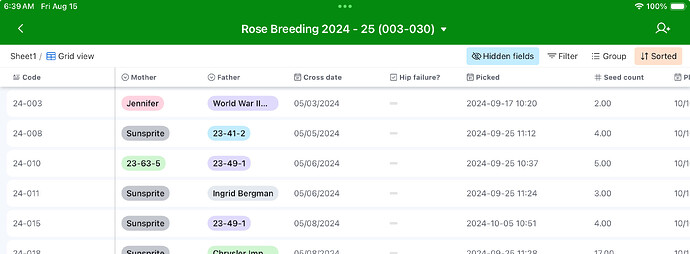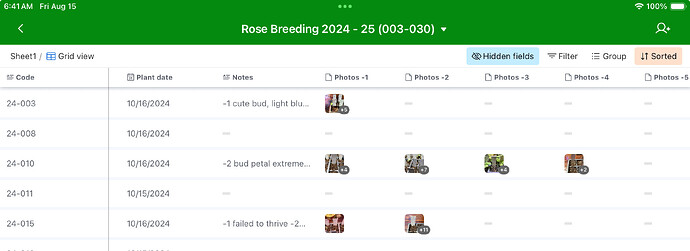Sure. As I begin pollinations in the spring, I use Airtable (from my phone, while working in the garden) to assign sequential numbers. So in 2026, the first cross will be 26-001, second 26-002, etc. the mother and father and date of cross are recorded at that time.
Throughout the summer, if a hip fails, there is a checked column, called (naturally) “Hip Failure”, and as I find them, I just pull out the phone, check that column, and it sorts those rows to the bottom, out of the active list (the data isn’t lost).
When I begin to pick in the fall, there is a column to record that date, and how many seeds were retrieved. I will then place each seed from that hip in soil in a Petri dish and stratify.
As seedlings later emerge, I remove them from the dish to small flats, and at that time, the individual seedling is assigned a sequential number. So if hip 26-001 made it through the summer, and then had a seed successfully germinate, it becomes 26-001-01, and I will keep it labeled that way through its lifetime. And you can see in the table that all photos of that seedling have their own cell, and you can activate the phone’s camera when you click on the cell, so it makes record keeping very easy. And I always take a picture of that transplanted seedling, so that makes an automatic record of the germination date, if I ever need it.
I don’t keep a separate note cell for each seedling (although you could). All notes for each seedling in a hip are kept in one field. If you see no photos, there were no germinations from that cross, though I do keep that dish, and will re-stratify along with this year’s crosses and try again.
It doesn’t take many photos now to push a spreadsheet over Airtable’s data limit, so as you can see, this example only includes the first 30 crosses of 2024. Here’re screenshots (imagine the rows side by side).


